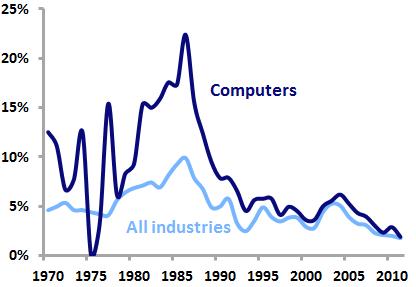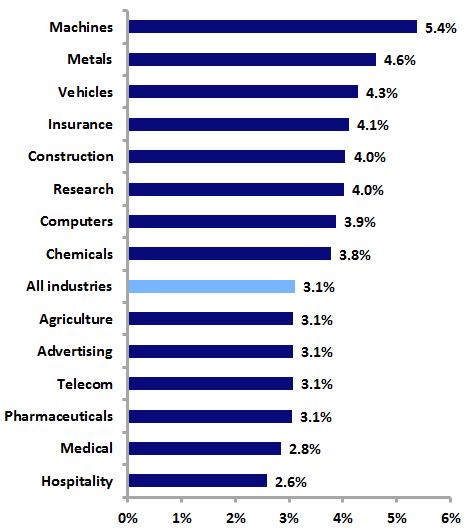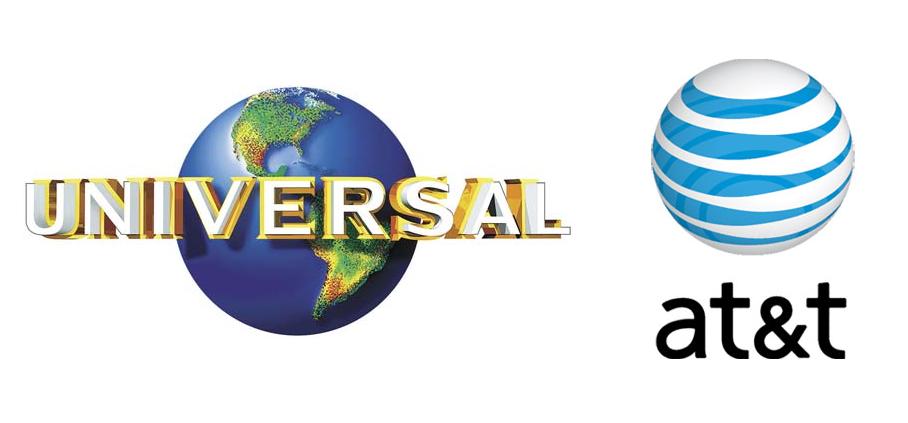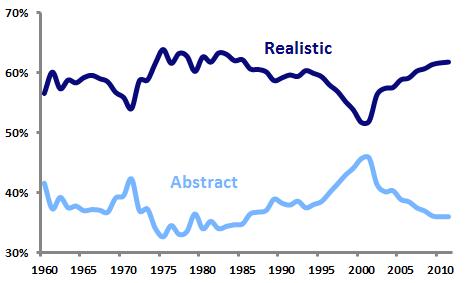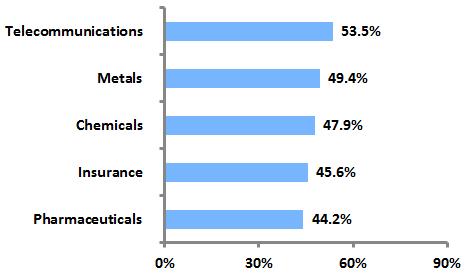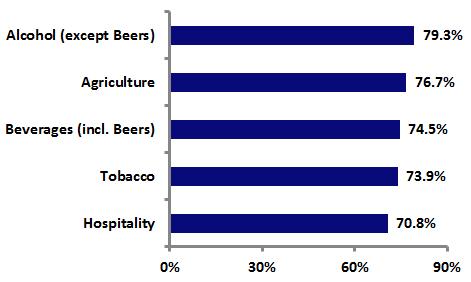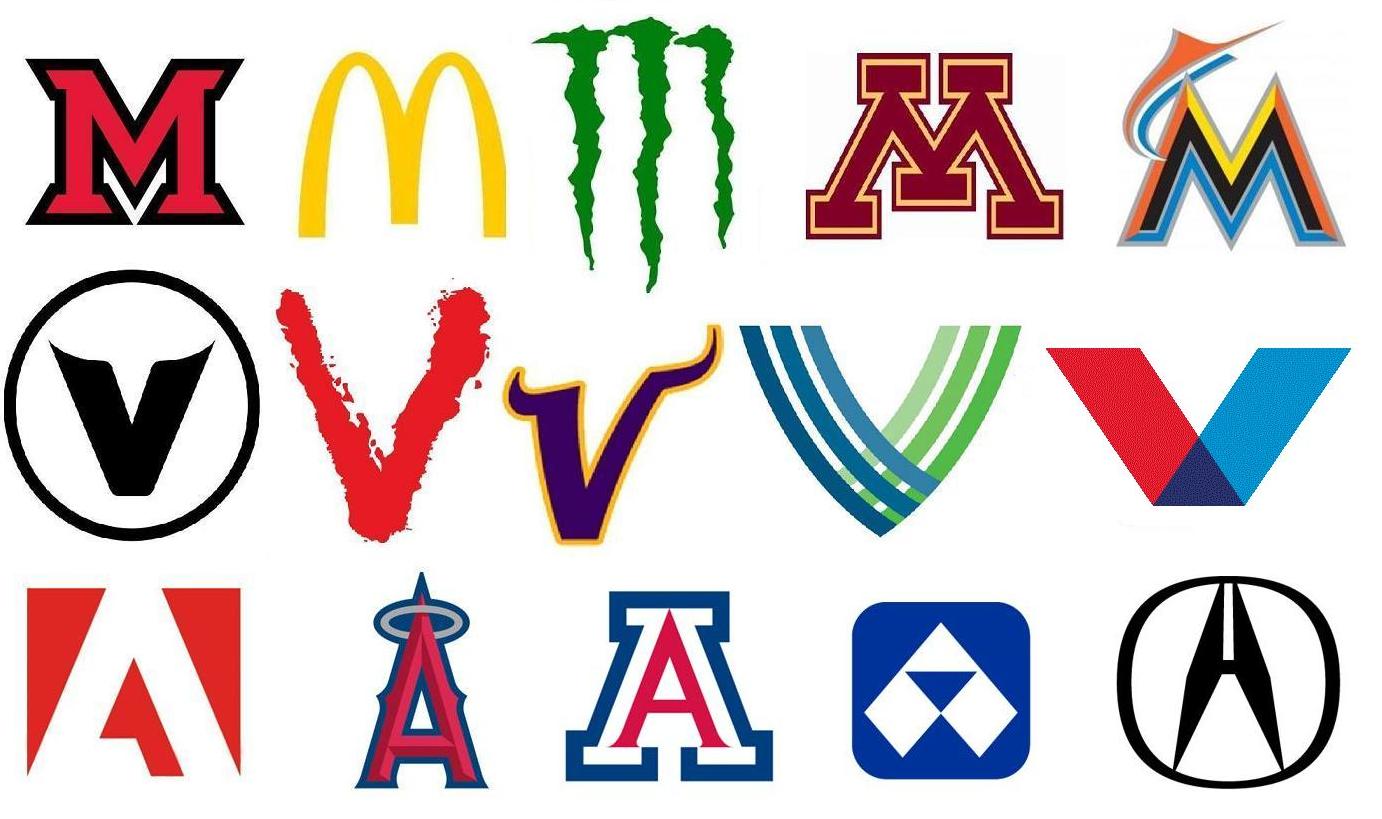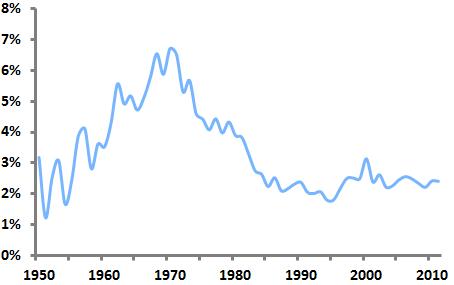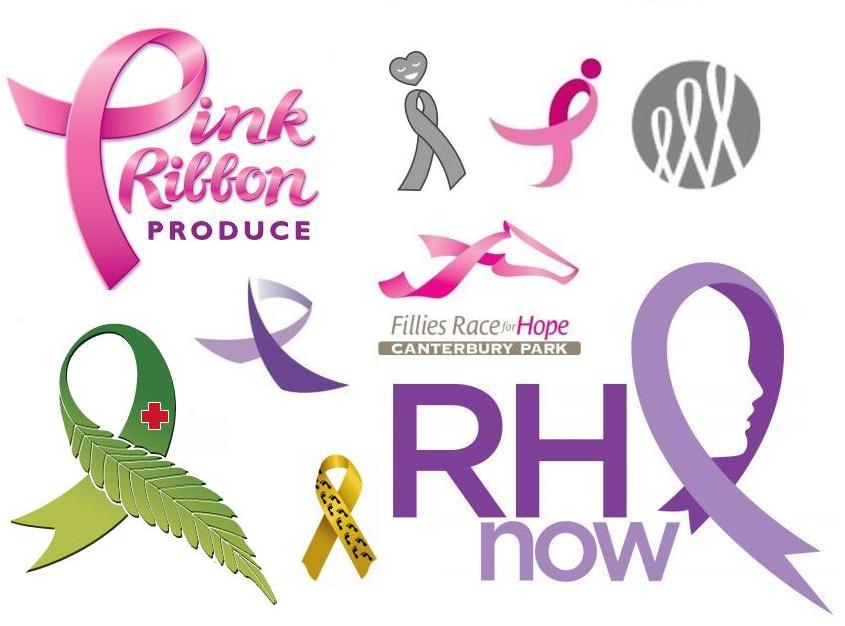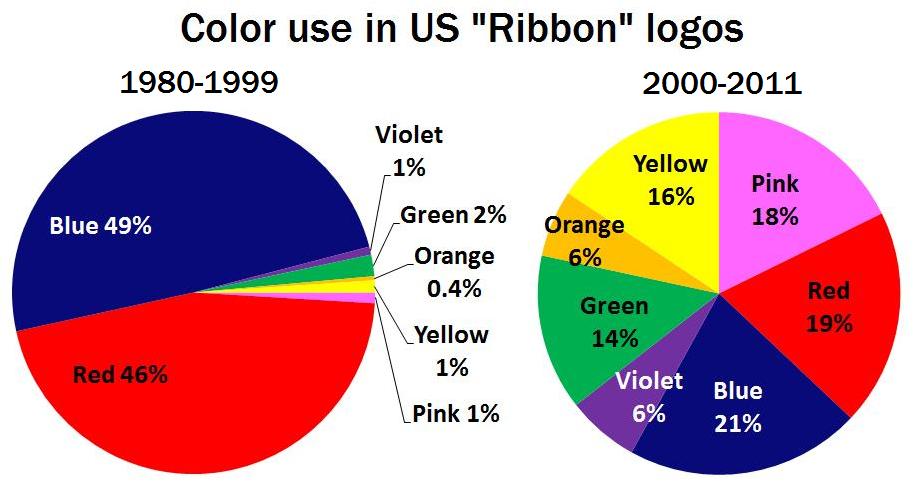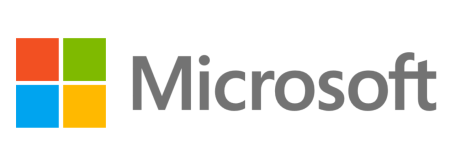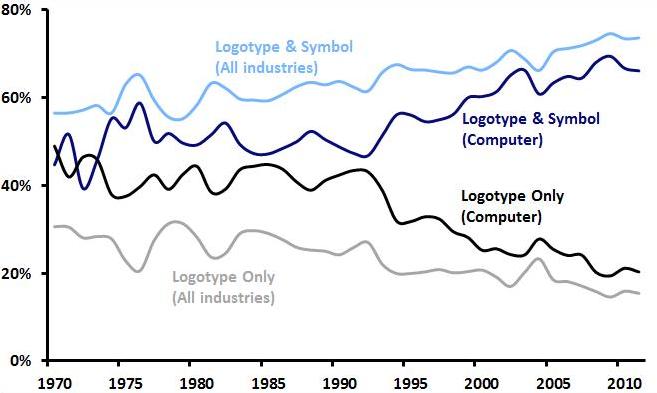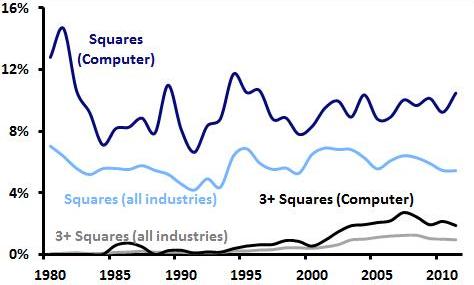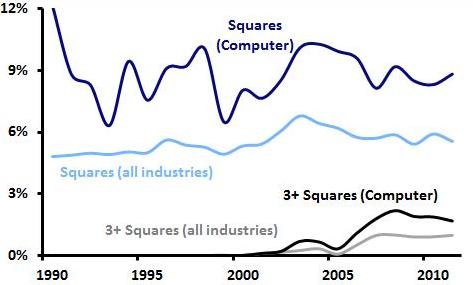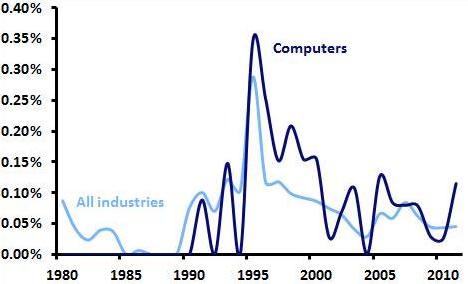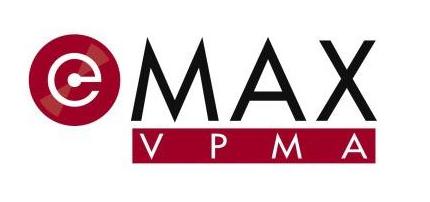2012 marked the 40th anniversary of Paul Rand’s 8-stripe IBM logo (top left) and, according to some chronologies, the 45th anniversary of the less-used 13-stripe version (top right). These marks launched a thousand imitators and defined the look of high-technology logos for years. But before they could do so, they were subject to the same sort of armchair design criticism that today’s social media have made so common. As Rand recounted in a 1991 article, his pitch to add stripes to the IBM mark he had previously designed prompted one IBM executive to snort, “It reminds me of the Georgia chain gang.” A prison uniform may have been the most obvious visual referent for stripes at the time, but the IBM logo quickly changed that.
As the computer industry and related high-tech fields took off in the 1970s and 80s, they spawned companies that looked to Big Blue for inspiration when adopting logos. John Mendenhall’s excellent 1985 book, High Tech Trademarks, displayed dozens of examples of these striped marks. Moving beyond the IBM comparisons, Mendenhall saw in them the imagery of the integrated circuit: “This intricate circuitry with its intriguing pattern of lines, often tapering from thick to thin, is the physical embodiment of unseen power. It is appropriate then that these linear compositions, seemingly random yet actually highly structured, have become the visual metaphor for an entire industry.”
Percentage of new US logos featuring stripes, by industry
Analysis of United States Patent and Trademark office data shows that use of stripes in logo designs peaked in 1986, when 9.9 percent of all new logos and 22.4 percent of new computer-related logos featured stripes. But the trend quickly died off amid criticism of the glut of lookalike marks, as stripes went from being seen as technical, precise, and advanced to simply cold, impersonal, and anonymous. By 2011, only 1.8 percent of new logos and 1.9 percent of new computer logos were striped.
Striped logos as a percentage of all new US logos, 2002-2011, in select industries
Where are striped logos to be found today? The graph above shows the prevalence of new striped logos within selected industries over the last ten years. Decidedly lower-tech industries such as machines, metals, and vehicles, perhaps late to the striped-logo party, are more likely to use stripes than their high-tech counterparts.



